The MahKween Method—A Q&A With Choreographer James MahKween
by Santiago Charboneau | Published February 3, 2021 in Arts & Culture
14 minute readA tall, elegant silhouette approaches me from the lobby of a modern, yet modest apartment complex on a street near a children’s hospital in Hollywood. I see a contagious smile emanating from a robust jaw before I see a handmade denim scarf draped over square shoulders, which winds its way down to the garment beneath. Golden blonde rows of braids cascade over rose-tinted aviators, which sit loosely on the mid-bridge of his nose.
When you see James MahKween, you realize that this is a man who not only creates his own art, but to a degree, lives it as well.
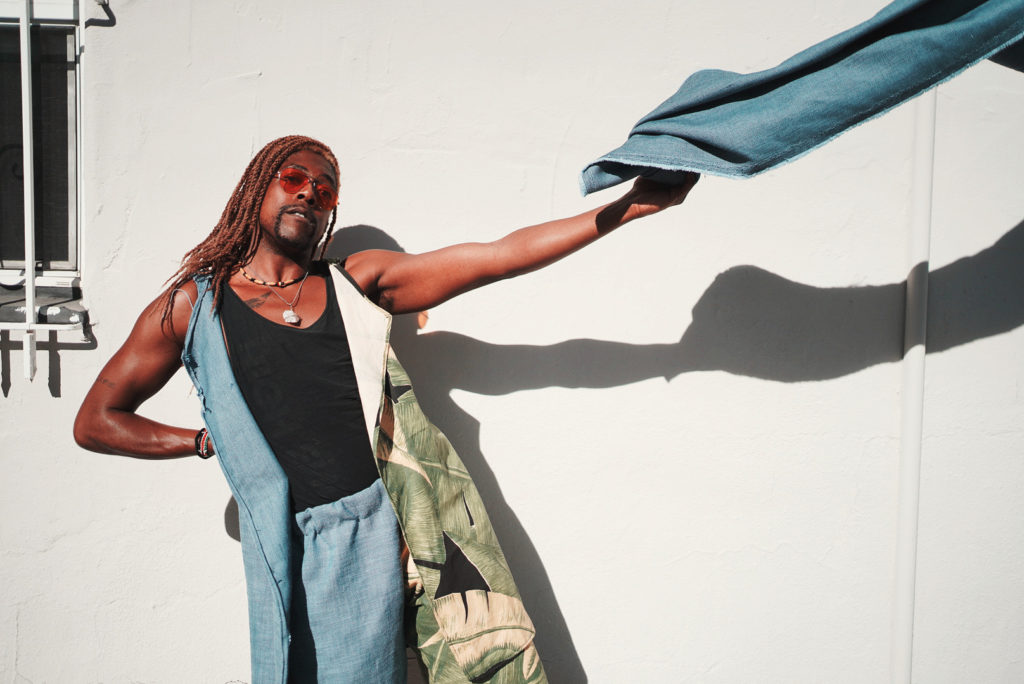
I first became aware of MahKween’s distinct persona at a dance event organized by the CRay Project in Long Beach in December, that he and a few collaborators choreographed together. At that event, members of the community were encouraged to watch and participate in a wide array of contemporary dance styles that were being taught by MahKween and other instructors. Also unique to this experience was the costuming worn by the dancers, many items of which were designed and sewn by MahKween himself.
It is tempting to imagine a person who conceptualizes, choreographs, and teaches their own dances as someone with a rigid sense of self; add to that the fact that MahKween curates, designs, and sews his own clothes (and often the costumes of others within his troupe, it is easy to imagine MahKween as an artist first, and friend later. But, spend even a moment speaking to Mahkween and you’ll realize that he is glad to share his energetic and confident brand of charisma with whomever is in need of some wisdom and a smile.
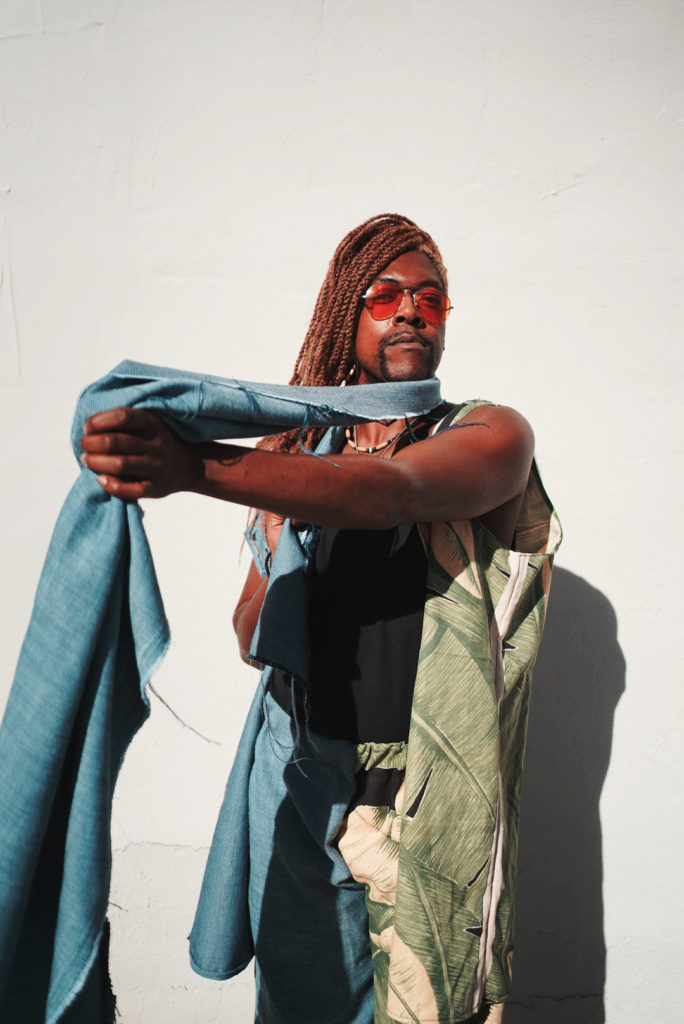
Within a few minutes of arriving for the photoshoot, we are chatting with an easy rhythm; I learn that MahKween hails from Georgia, and moved to Southern California approximately 10 years ago. We take a few photos by the pool of his apartment complex in Hollywood, and then we’re off to chase better light for the photoshoot. Upon hitting the sidewalk, I realize that I am walking a little faster than usual, just to keep up with MahKweens gliding gait.
We stop to take a few more photos, and MahKween places his phone on the sidewalk, where an energetic dance track serves to create a sonic space for him to pose beside.
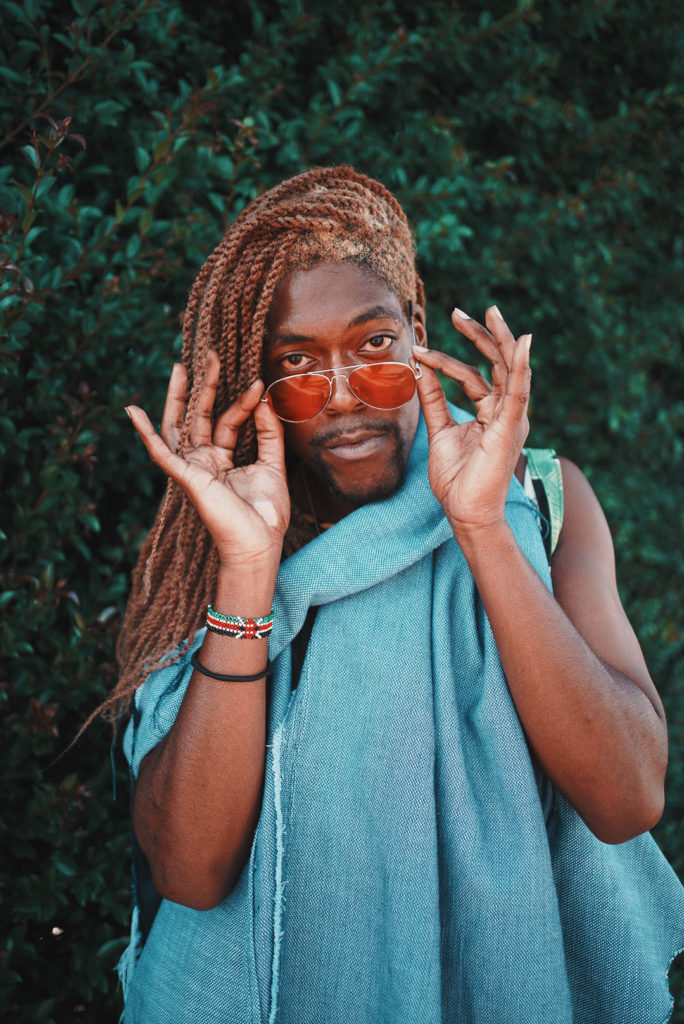
All in all, what usually amounts to an hour or so of awkward direction, location scouting, and ice-breakers takes no longer than 20 minutes. I find myself wondering if students under MahKween’s instruction might find the same sense of easy acceleration. The time simply dances away.
After the photoshoot, I sat down with MahKween to talk dance, inspiration, and process.
Tomisin Oluwole
Fragmented Reflection I, 2021
Acrylic on canvas panel
24 x 30 inches
Click here to check out our interview with Tomisin Oluwole, a literary and visual artist based in Long Beach.
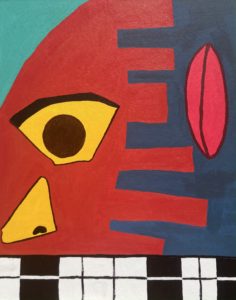
Instead of gunking up our site with ads, we use this space to display and promote the work of local artists.
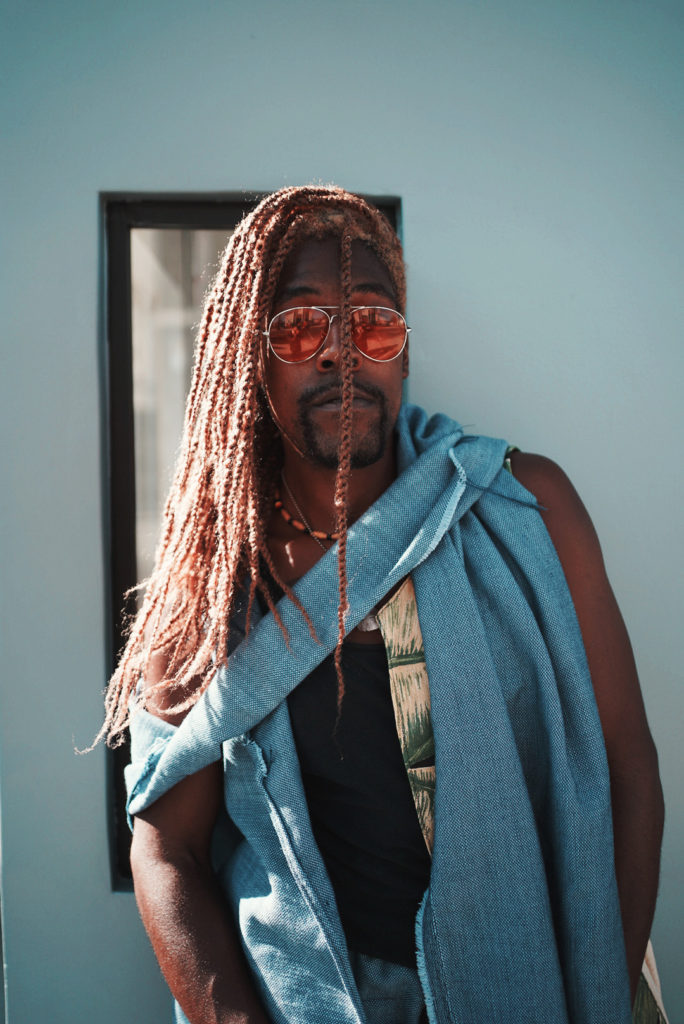
Santiago: What drew you to dance as a form of expression?
MahKween: I’ve always used dance as a form of expression. It may be hard to believe, but as a kid I was actually quiet and dance has always offered me the opportunity to express my emotions.
S: How would you describe “The MahKween Method”? How does it inform your art and work in the community?
M: The MahKween method is me. That’s how I can best explain it; it’s the creative aspect of how I move, and live. I feel like I can live in many realms that feel comfortable to me, and bring a new light to them. Half of the dances I create are emotional, sorrowful, and deal with ugliness, even though people think that “beautiful dancing” means “happy and cute.” But I feel like I make sorrowful work because that’s what I want to release and discuss right now. And I think that me being me is helping to show others how to be themselves.
S: Why do you practice your art in Long Beach?
M: I just go to any area that welcomes me, honestly. And Long Beach is definitely a welcoming area. I’ve got a lot of friends and family out there, like the CRay Project, so I’ve been working in Long Beach a lot recently and helping people with different projects. I taught a few classes for the CRay project as well, and people responded, asking me to come back. So I’ve been using the space and working within the space because it’s got good energy and is welcoming to me.
S: What is your process when you conceptualize a dance from an idea in your mind, to performing it at an event?
M: When I’m conceptualizing a piece or a show, I’m either in the space where I’m really aiming to make a statement on a moment in the world, or in my life, it honestly just comes to me. I’ll be in the middle of a conversation with a friend, talking about my life and some deep moments, how I can do my part, and BOOM. Like a wave, it hits me.
S: You mentioned the CRay Project, how did you get involved with them?
M: I was collaborating on a project with another choreographer, and the CRay Project was dancing for that person. So I taught them and we went from there, you know, enjoying each other’s time. The CRay Project shows nothing but love and great spirits, and the work they produce… who wouldn’t want to help out, y’know? So yeah, we met through dancing; I would do a project, they’d dance for me; they’d do a project, I’d dance for them. And so respect and trust were built until I did a show with my friends called “The MahKween Method,” and that was a huge show, which the Cray Project danced in a big portion of as well. I guess you can say it’s an ongoing collaboration.
S: Of the dances you’ve choreographed, what are your favorites and why?
M: Honestly, I love all of my work because it’s all little moments of me, or it’s offering information on something I’ve studied. I created a suite called “The Gospel,” that is my ode to making a new start for my life and my being; each section of the suite discusses the road to my salvation, I guess you could say. I’m also in the midst of creating a six episode series, called “CATCALLING” which is about how men, women, and gender queers are being harassed and attacked by masculine energy, or that idea of toxic masculinity. I believe in bringing it to the forefront and breaking those chains; allowing feminine energy to live in its full being without being harassed by toxic masculinity. Each episode will focus on a certain topic around catcalling.
S: Do you find that working with so many different people requires a multitude of approaches to get them to engage with your work?
M: I mean, for me, I don’t think that I’ve ever struggled with that. I’ve been told that I have the ability to push the right buttons, in a good way, to get somebody to be where they need to be emotionally. That’s because I also have this gift of setting people to dance to pieces that fit who they are, at the right time, perfectly. I’ve done this piece about a woman who lived her life, wanting a little love at the same time, and then my friend, who was dancing in that piece, she says, “I am literally living this moment right now!” So for me, I will live with what you feel, because a dance is more a conversation with yourself than anything.
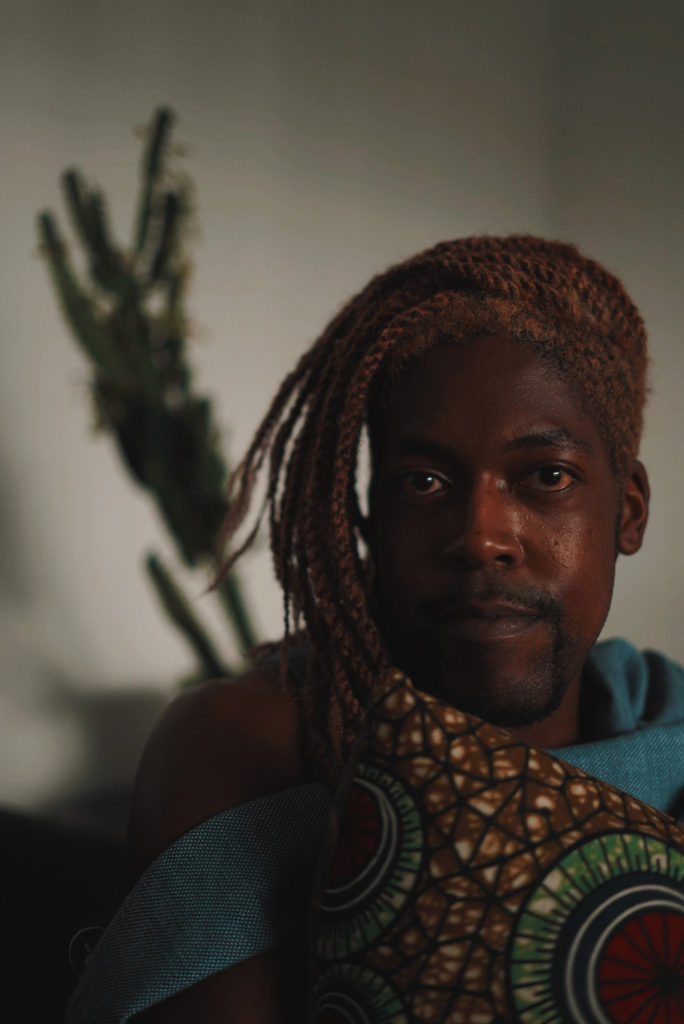
MahKween is currently conceptualizing and choreographing an upcoming dance series titled “CATCALLING,” which will be performed at a later date this year. Follow him at @the_mahkween_method on Instagram to see more of his work.
Help Us Create An Independent Media Platform for Long Beach
We believe that what we are trying to do here is not only unique, but constitutes a valuable community resource. We are dedicated to building a fiercely independent, not-for-profit, and non-hierarchical media organization that serves Long Beach. Our hope is that such a publication will increase civic participation, offer a platform to marginalized voices, provide in-depth coverage of our vibrant art scene, and expose injustices and corruption through impactful investigations. Mainly, we plan to continue to tell the truth, and have fun doing it. We know all this sounds ambitious, but we’re on our way there and making progress every day.
Here’s what we don’t believe in: our dominant local media being owned by one of the city’s wealthiest moguls or a far-flung hedge fund. We believe journalism must be skeptical and provide oversight. To do so, a publication should remain free from financial conflicts of interest. That means no sugar daddy or mama for us, but also no advertisements. We answer to no one except to our readers.
We call ourselves grassroots media not only because we are committed to producing work that is responsive to you, dear reader, but because in order for this project to continue we will also need your support. If you believe in our mission, please consider becoming a monthly donor—even a small amount helps!

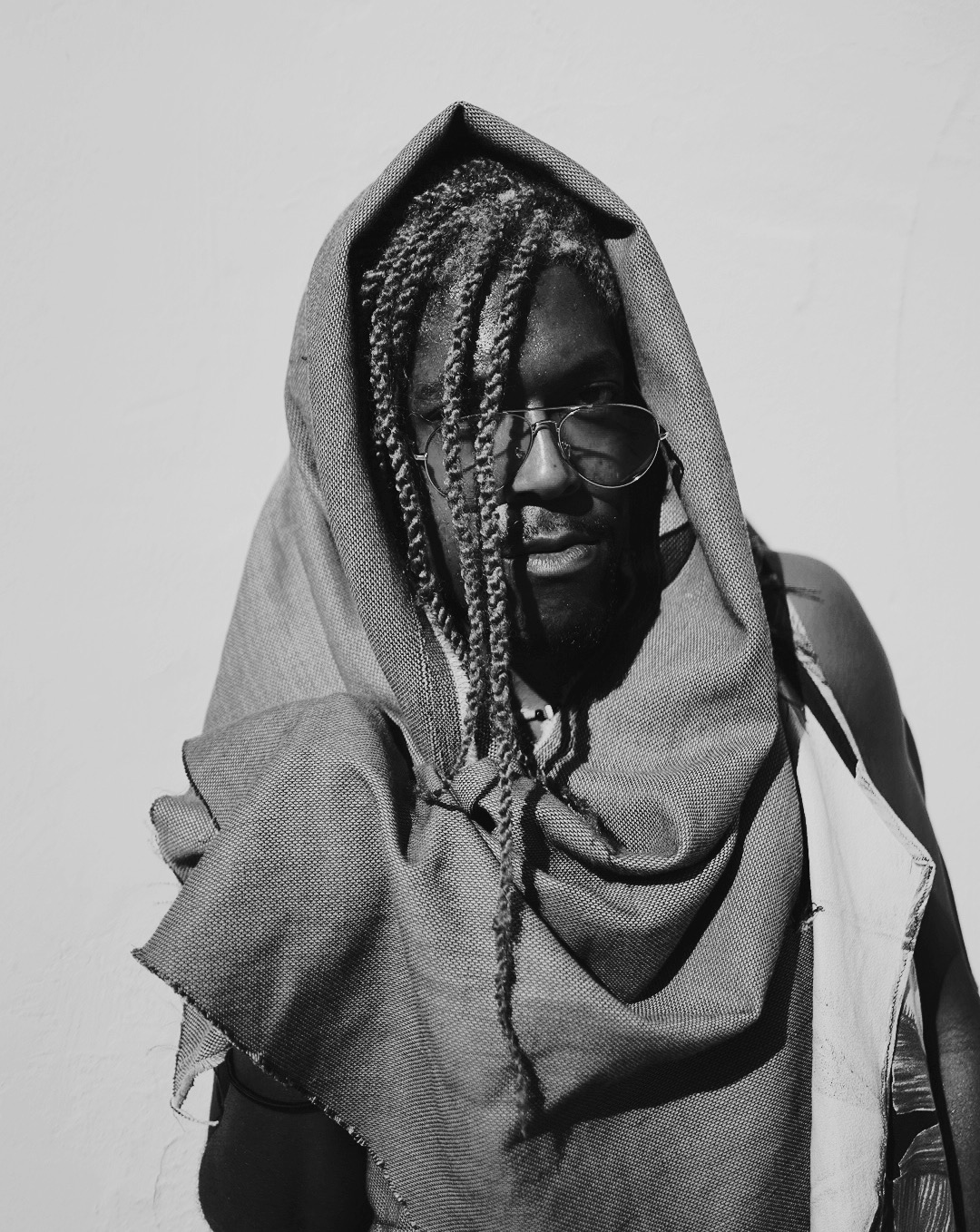
 santiago@forthe.org
santiago@forthe.org




